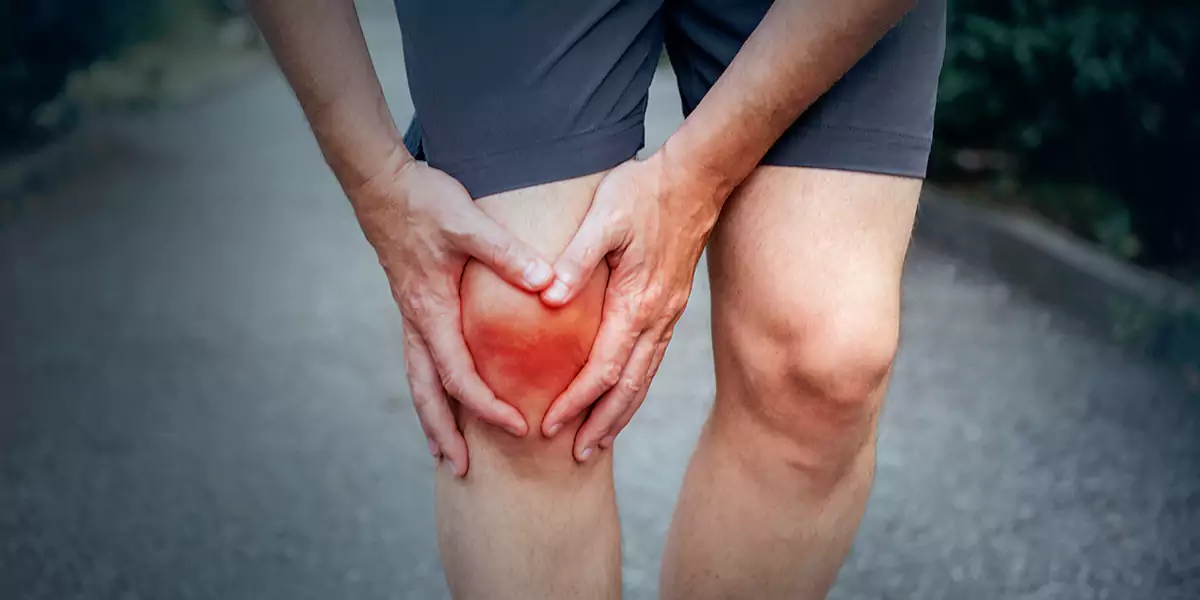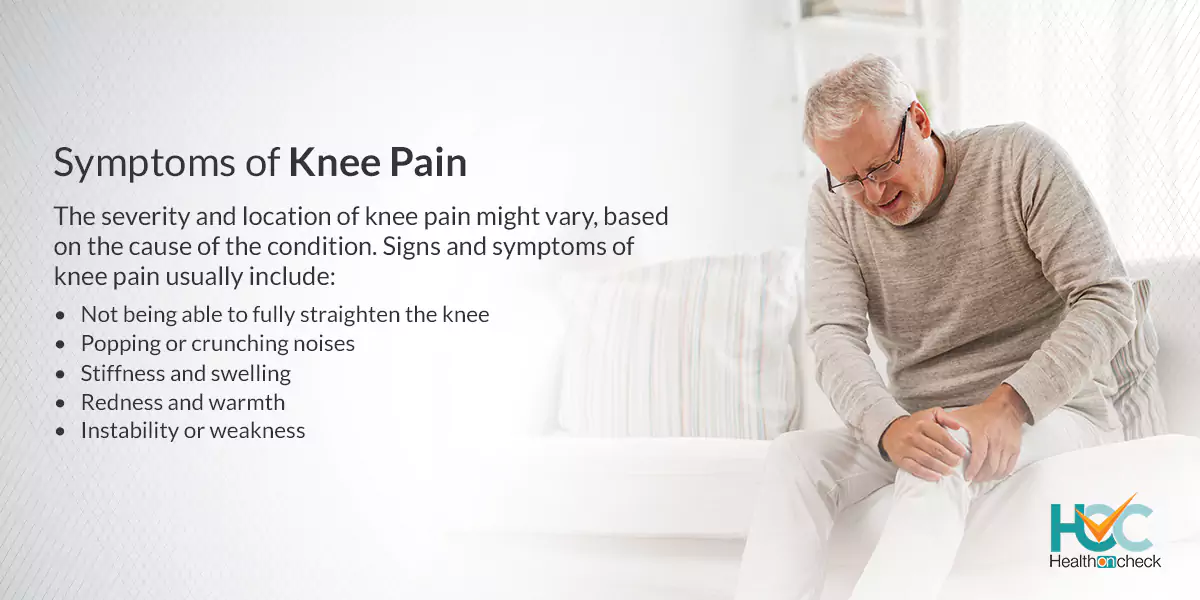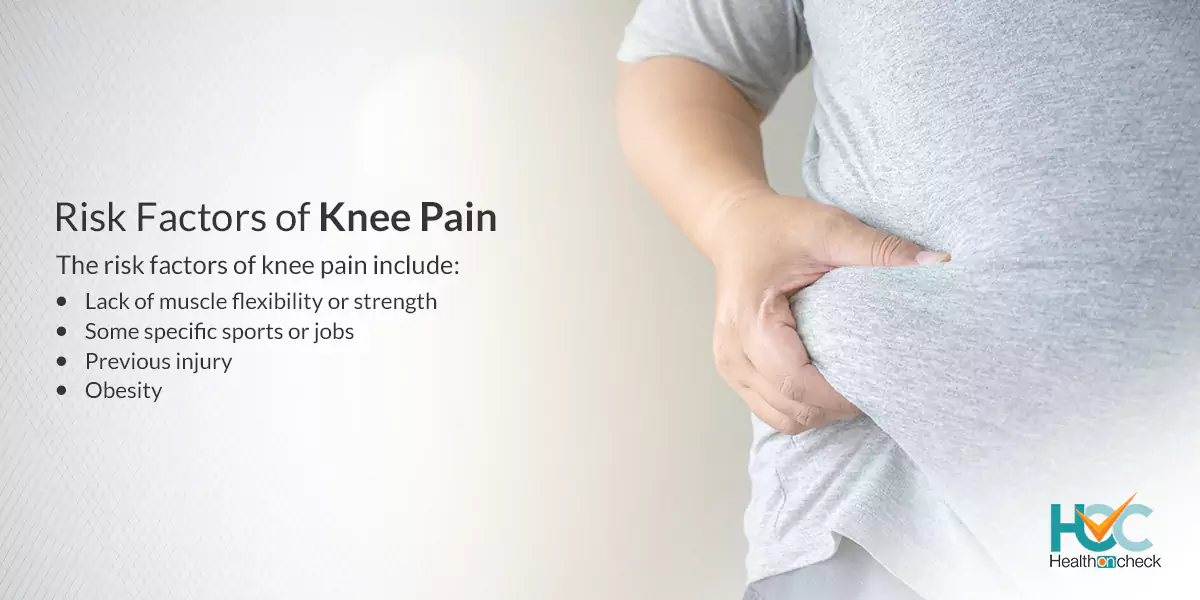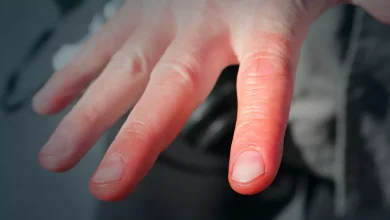What is Knee Pain?

Knee pain is a common health condition that affects people of all ages. Knee pain might occur because of an injury, like a torn cartilage or ruptured ligament along with a few medical conditions like arthritis, gout, and infections which can also lead to knee pain. Several types of minor knee pain respond well to self-care measures. Physical therapy and knee braces are also helpful to relieve pain however in some instances, your knee might need surgical repair.
What are the Types of Knee Pain?
There are various types of conditions especially arthritis that might affect your knee and cause knee pain including:
– Osteoarthritis
Also known as degenerative arthritis, osteoarthritis is the most common type of arthritis which is a wear-and-tear condition that happens when the cartilage in your knee starts to deteriorate with age and use.
– Rheumatoid arthritis
It is the most devitalizing form of arthritis which is an autoimmune condition affecting almost any joint in your body, including your knees.
– Gout
This form of arthritis happens when uric acid crystals accumulate in the joint. Whilst gout usually affects the big toe, it can also affect the knees.
– Pseudogout
It’s usually mistaken for gout, pseudogout occurs because of calcium-containing crystals that form in the joint fluid and knees are the most common joint affected by pseudogout.
– Septic arthritis
At a few times, your knee joint might be infected and cause pain, swelling, and redness. Septic arthritis usually comes with a fever, and there’s generally no trauma before the onset of pain. Septic arthritis can swiftly lead to excessive damage to the knee cartilage.

What are the Symptoms of Knee Pain?
The severity and location of knee pain might vary, based on the cause of the condition. Signs and symptoms of knee pain usually include:
– Stiffness and swelling
– Redness and warmth
– Instability or weakness
– Popping or crunching noises
– Not being able to fully straighten the knee
What are the Causes of Knee Pain?
Generally, injuries, mechanical problems, types of arthritis, and other conditions may cause knee pain. A knee injury might impact any of the ligaments, tendons, or fluid-filled sacs (bursae) surrounding your knee joint along with the bones, cartilage, and ligaments that create the joint itself. Some of the most common knee injuries that can cause knee pain include:
– ACL injury
An ACL injury means a tear of the anterior cruciate ligament (ACL) which is one of four ligaments connecting your shinbone to your thighbone. An ACL injury is usually common among people who play sports such as soccer, basketball, soccer or other sports that need sudden changes in direction.
– Fractures
The bones of the knee, such as the kneecap (patella), might break while falling or accidents. Also, people whose bones become weak due to osteoporosis can sometimes get a knee fracture by simply stepping wrong.
– Torn meniscus
The hard, rubbery cartilage that works as a shock absorber between your shinbone and thigh bone is known as the meniscus. It can get torn if you twist your knee suddenly while bearing weight on it.
– Knee bursitis
A few knee injuries can result in inflammation in the bursae, the tiny sacs of fluid cushioning the outside of your knee joint so that tendons and ligaments slide smoothly over the joint.
– Patellar tendinitis
Tendinitis can lead to inflammation and irritation of one or more tendons and this inflammation can occur when there’s an injury to the patellar tendon, running from the kneecap (patella) to the shinbone and permitting you to kick, run, and jump.
Mechanical problems
A few examples of mechanical problems that can result in knee pain include:
– Loose body
In some instances, injury or degeneration of bone or cartilage can result in a part of bone or cartilage to break off and float in the joint space. This might not cause any problems unless the loose body starts to interfere with knee joint movement.
– Iliotibial band syndrome
It happens when the tough band of tissue extending from the outside of your hip to the outside of your knee (iliotibial band) becomes very tight and starts to rub against the outer portion of your thigh bone.
– Dislocated kneecap
It happens when the triangular bone covering the front of your knee slips out of place, generally to the outside of your knee. In some instances, the kneecap might get displaced and you can be able to notice the dislocation.
– Hip or foot pain
If you are suffering from hip or foot pain, you might alter the way you walk to get relief from your painful joint but it can put more stress on your knee joint and lead to knee pain.

What are the Risk Factors of Knee Pain?
The risk factors of knee pain include:
– Obesity
If you are obese or overweight then there is extra stress on your knee joints, even while performing normal activities like walking, climbing, or getting down from stairs. It puts you at an increased risk of osteoarthritis by fastening the breakdown of joint cartilage.
– Lack of muscle flexibility or strength
A lack of strength and flexibility might augment the risk of knee injuries and cause knee pain.
– Some specific sports or jobs
Certain sports put extra weight on your knees as compared to others and increase your risk of a knee injury. Also, occupations that need repetitive stress on the knees like construction or farming can increase your risk.
– Previous injury
If you had a previous knee injury then it’s more likely that you’ll injure your knee again.
What are the Complications of Knee Pain?
Most of the knee pains are not severe however some knee injuries and medical conditions, like osteoarthritis, can cause serious pain, joint damage, and disability if not treated. And having a knee injury — even a minor one — makes you more prone to similar injuries in the future.
How Knee Pain is Diagnosed?
At first, your doctor might carry out a physical exam to diagnose knee pain including:
– Examining your knee to detect swelling, pain, tenderness, warmth, and visible bruising
– Determine how far you can move your lower leg in different directions
– Push on or pull the joint to determine the integrity of the structures in your knee
Imaging tests
Imaging tests are also performed sometimes to diagnose knee pain including:
– X-ray
An X-ray might be prescribed by your doctor to detect bone fractures and degenerative joint disease.
– Computerized tomography (CT) scan
Here CT scanners combine X-rays to take images from various angles and create cross-sectional images of the inside of your body. CT scans are also helpful to diagnose bone problems and subtle fractures. A special kind of CT scan can help to accurately identify gout even when the joint is not inflamed.
– Ultrasound
Sound waves are used during ultrasound to create real-time images of the soft tissue structures within and around your knee. Your doctor might want to move your knee into different positions during the ultrasound to detect specific problems.
– Magnetic resonance imaging (MRI)
During MRI radio waves and a powerful magnet are used to create 3D images of the inside of your knee. This test is especially useful in finding injuries to soft tissues including ligaments, tendons, cartilage, and muscles.
Lab tests
In case your doctor suspects an infection or inflammation, you might have to go through blood tests and sometimes a process known as arthrocentesis, where a small amount of fluid is removed from within your knee joint using a needle and sent to a laboratory for further analysis.
What are the Treatment Options Available for Knee Pain?
The treatment of knee pain varies based on the cause of your knee pain.
– Medications
Your doctor might prescribe medications to ease pain and to treat the conditions that are causing your knee pain, like rheumatoid arthritis or gout.
– Therapy
Your doctor might teach you methods to strengthen the muscles around your knee that help to make it more stable. Your doctor may also prescribe physical therapy or various types of strengthening exercises depending on the specific condition that is causing your pain.
If you are physically active or play any kind of sport, you might require exercises to correct movement patterns that might be impacting your knees and to establish good technique during your sport or activity. Exercises to improve your flexibility and balance also are vital.
In some particular conditions, various types of braces may be used to help protect and support the knee joint.
– Injections
In some instances, your doctor might refer to injecting medications or other substances directly into your joint such as:
Corticosteroids
Injections of a corticosteroid drug into your knee joint are helpful to lessen symptoms of an arthritis flare and reduce pain lasting from a few months but these injections aren’t effective in all cases.
Hyaluronic acid
A thick fluid, which is the same as the fluid that naturally lubricates joints, known as hyaluronic acid can be injected into your knee to improve mobility and relieve pain.
Platelet-rich plasma (PRP)
Here a concentration of various growth factors that appear to reduce inflammation and promote healing is injected.
– Surgery
If you have an injury where surgery might be required, it’s not necessary to have the operation immediately. You should consider the pros and cons of both nonsurgical rehabilitation and surgical reconstruction and if you decide to have surgery, your options may include:
Arthroscopic surgery
Based on your injury, your doctor might examine and repair your joint damage by using a fibre-optic camera and long, narrow tools inserted through just a few tiny incisions around your knee. Arthroscopy can be used to get rid of loose bodies from your knee joint, remove or repair damaged cartilage, and reconstruct torn ligaments.
– Partial knee replacement surgery
Here the most damaged portion of your knee is replaced with parts made of metal and plastic.
– Total knee replacement. In this procedure, your surgeon removes the damaged bone and cartilage from your thigh bone, shinbone, and kneecap, and an artificial joint made of metal alloys, high-grade plastics, and polymers is placed there.
– Osteotomy
Here bone from the thigh bone or shinbone is removed to better align the knee and relieve arthritis pain. This surgery might aid you to delay or avoid total knee replacement surgery.
Living with Knee Pain
Knee pain can cause problems in carrying out your daily activities and in severe cases, you might find it difficult to walk also. Though knee pain is usually not a serious issue it can lead to issues in various parts of your life. Nowadays various treatment procedures are available to give you relief from knee pain.
Whom to Consult?
You should consult with your doctor if you:
– Are not able to bear weight on your knee or feel as if your knee is unstable or numb
– Notice knee swelling
– Not able to extend or flex your knee fully
– Notice a deformity in your leg or knee
– Having a fever, along with redness, pain, and swelling in your knee
– Feel severe knee pain




